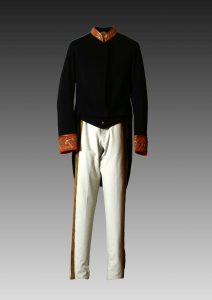
Portugal
Sec. 19/20
MQC 2180
Photo: Rui Camacho/DRC
The estate of the Quinta das Cruzes Museum also encompasses other collections which feature here grouped by their lesser representativity in the collection as a whole.
- Musical Instruments;
- Means of Transport;
- Metals;
- Archaeological cluster;
- Textiles;
- Glass.
Musical Instruments
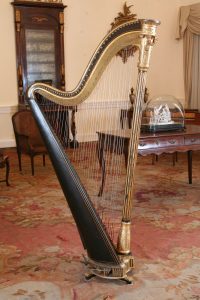
Fab. J.A. Stumpff
London, 19th century
MQC 2201
Photo: MQC
In the Musical Instruments cluster, worthy of special mention is a numbered Harp by J.A. Stumpff, a London manufacturer who worked in the 19th century and incorporated in the Museum collection thanks to a donation from the Homem Costa family.
Also of particular interest in this cluster is the Orchestrophone (a mechanical musical instrument) dating from 1900 and which has an extensive list of 167 perforated musical cards.
Means of Transport
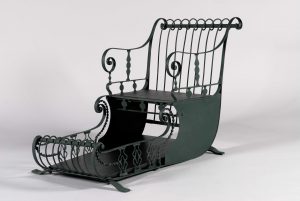
Madeira island
Sec. 19
MQC 2196
Photo: 2009 Pedro Clode
The Means of Transport cluster is made up of palanquins and sedan-chairs dating from the 19th century, and of particular interest is a sedan-chair of English origin dating from 1792-1816 whose lateral projection bears the arms of the count of Ribeiro Real, and a French sedan-chair dating from the 19th century and which was recently restored at the Portuguese Institute of Conservation and Restoration.
Metals
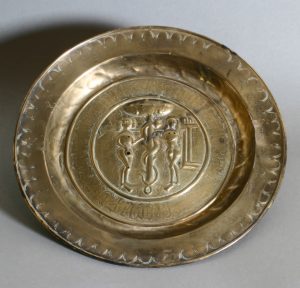
Nuremberg
Sec. 16
MQC 1137
Photo: 2007 Rui Camacho
Although it has not been studied in great depth yet, the collection of Metals is made up of a varied set of pieces and a wide range of types. Of particular note are the Nuremberg plates, the bed warmers, the set of mortars as well as a whole cluster of pieces of a more utilitarian nature.
Archaeological Cluster
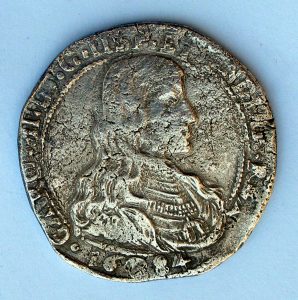
1684
MQC 2039.1
Photo: 2004 MQC
Currently on loan at Casa Colombo – Museu do Porto Santo is a significant part of the Archaeological Cluster of the Quinta das Cruzes Museum. This cluster is made up of various pieces (a cannon and its firing pins, fragments of pipes, coins and silver ingots) belonging to the estate of the Dutch ship Slot ter Hoodge which sank off the Island of Porto Santo.
Another set of pieces assigned to this cluster comprises the donation by Francisco Reiner in 1988 and which includes various ceramic and metal pieces discovered in his underwater searches carried out off the Portuguese and African coasts.
Textiles
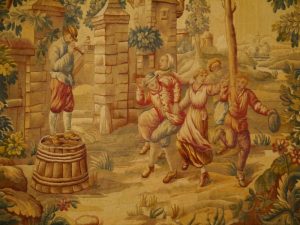
Aubusson, France
1743
MQC 2137
Photo: 2013 MQC
Although not extensive, the Textiles collection has some pieces of great interest encompassing pieces of a religious nature (such as the frontals) and others of a profane nature which includes the kilts from Castelo Branco, kilts of Chinese origin, male court costumes, an interesting cluster of 30 fans and also two tapestries. One is Flemish and the other is of French production “Manufacture Royale d’Aubusson 1743”.
Glass
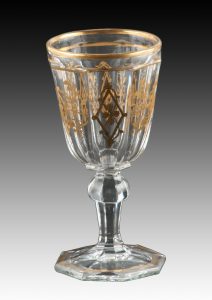
Portugal (?)
Sec. 19
MQC 1222
Photo: 2007 Rui Camacho
The set of pieces going to make up the Glass cluster, is also awaiting an in-depth study and is chiefly made up of bottles, glasses and chalices, making up a total of one hundred pieces.
